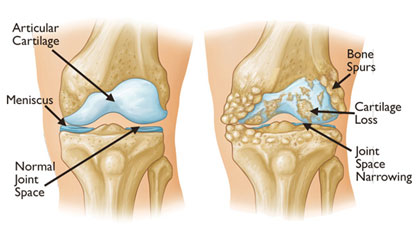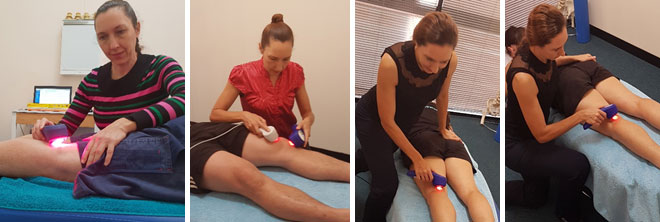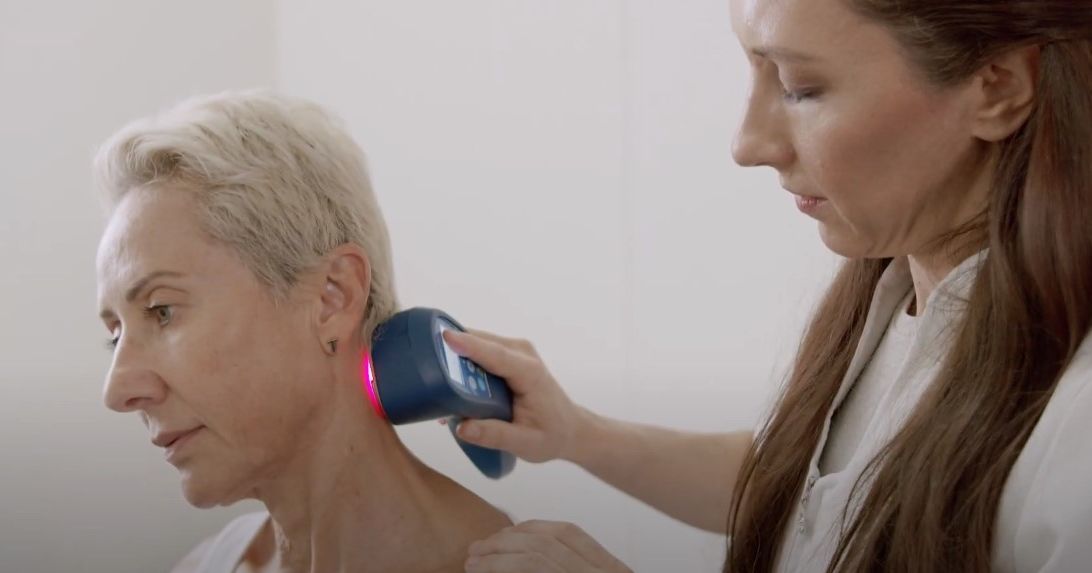A study done by the Lasers medical science journal by Nambi et al., “Radiological and Biomechanical effects of low-level laser therapy (LLLT) in chronic osteoarthritis in Al-Kharj, Saudi Arabia” in 2017, demonstrated the analgesic and biochemical effect of Low-level laser therapy on patients with knee osteoarthritis.
Osteoarthritis (wear and tear) is one of the most common forms of arthritis, it is characterised by features such as pain, joint inflammation, impaired muscular stability and functional incapacity.
Furthermore, osteoarthritis damages the articular cartilage around the joints which can lead to narrowing of the joint spaces further reducing mobility and making everyday tasks difficult to perform.
When the joint spaces are narrowed it results in the bones of the joints to rub closely against one another with less of the shock absorbing factors that the cartilage provides which results in the symptoms as described above (pain, stiffness, swelling and reduced mobility).
The most common joints that are affected are the large weight-bearing joints of the body like the hip and the knees.

Therefore, it is of major importance that sustainable treatment options are available to prevent further disability, morbidity and mortality risks. It is thought that low level laser therapy reduces pain with its analgesic effects as well as increase and assist in regeneration of cartilage. The objective of the study done by Nambi et al., was to examine the analgesic and regenerative effects of Low-level laser therapy on patients with knee osteoarthritis. Subjects in the active group were irradiated with low level laser 3 times per week for a period of 4 weeks whilst the placebo group was treated with the same laser device but with reduced emission of energy from the probe.
Both groups also followed an exercise program that involved a series of conventional exercises with the application of kinesiotape for 45 minutes that consisted of a warm up, strengthening exercises and stretches.

| Joint space width | Baseline | 4 weeks | 8 weeks |
| Active laser group | 2.2mm | 3.8mm | 4.2mm |
| Placebo group | 2.4mm | 2.6mm | 2.8mm |
Therefore, concluding that low level laser therapy was in fact efficient in reducing pain, increasing joint space and improving overall cartilage thickness through biochemical changes.
Lakeside Laser offers treatment options for those suffering from osteoarthritis. We are located in Gnangara, WA 6077—conveniently central to Perth’s northern suburbs.
We regularly welcome visitors from surrounding areas such as Ocean Reef, Quinns Rocks, Mindarie, Craigie, Beldon, Edgewater, Kinross, Butler, Carramar, Sinagra, Wanneroo, Pearsall, Hocking, and Joondalup.
If you would like further information or to book an appointment, feel free to contact our laser technician, Dr Linda Schiller, on 0468 429 111 or visit our website at www.lakesidelaser.com.au.



